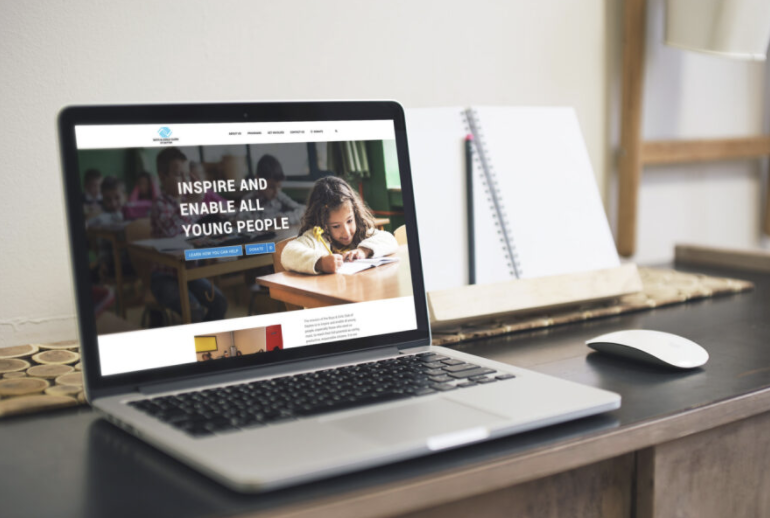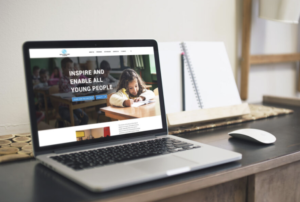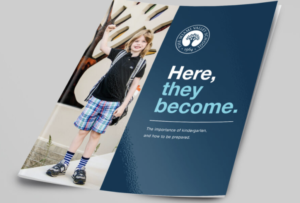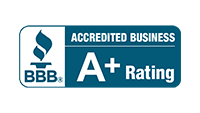
I Feel Like When I Solve One Problem, Two Others Arise. +Educators Nationwide
Student enrollment has continued to decline, following a trend many organizations within education have experienced. Educators must now juggle this issue. As well as student retention, hiring educators, increasing alumni engagement, reaching new donors, and maintaining current relationships.
As a method of marketing for education, social media can help increase interest and engagement for schools. With the use of personalized content, paid social media marketing, maintenance of high-quality content. And use of augmented reality, creating interest-based groups, and sharing stories, schools can reach new audiences.
Six Methods To Boost Your School’s Social Media Presence
Personalized Content
Personalizing posts tend to connect readers (students) to the content. These posts are said to resonate with followers and increase the likelihood that they will repost, hopefully getting more followers. Personalization is no longer just a trend but an expectation for many current and prospective students. For most young people, personalized and/or algorithmic experiences are part of their daily lives. These include things such as what shows up in their Instagram, Twitter, and Facebook feeds.
There is an increased focus on responding to users, cultivating conversations, and building authentic brand-follower relationships. All of these elements will encourage increased engagement. 
Understanding students’ goals, desires, interests, values, and behaviors can help schools create healthier and more effective opportunities. This helps lasting digital and social in-person connections.
Unpersonalized content can quickly yield a disconnect between expectations and reality for prospective students as they move through the enrollment journey. As well as getting more invested in your institution and programs.
Schools need to define their authentic personality and communicate the information with their audience to build a connection from the very start of any outreach.
Paid Social Media Marketing for Education
One of the best ways for a school to increase followership on social media is by adapting to paid social media posts.
There have been declines in users or flat growth for sites like Twitter, Facebook, and Snapchat. As a result, social media platforms are pushing harder to monetize the distribution of business content. To ensure high community engagement, higher education marketing departments are encouraged to invest more in paid social media.
We often advise schools to leverage every available opportunity to promote their social media accounts. Including social media links and handles in printed material like newsletters, flyers, in-school signage, outdoor marquees, scoreboards, and alumni promotions will help.
Sharing the news about the exciting things around campus via social media is a great way to boost current student engagement. And pique the interest of prospective students and parents scoping out your university.
Social channels provide many tools for events. These can be used to share details and photos, encourage students to comment and share posts. Even create groups or events so that people who are interested in the events can interact.

Another unique idea is to run the ad using a hashtag. A hashtag can link students and their academic experiences on social media sites.
Maintain High-Quality Content
Don’t be generic. Higher-quality posts with interesting information are more likely to get reposted by your existing followers. Thereby reaching an entirely new audience of potential followers.
It recommends that shared content should be diversified in both format and content. This means that schools should be posting links to news, statistics, tips, and facts about schools and education. As well as school- or area-specific human interest pieces about students, administrators, and teachers.
Educational followers have no interest in stale, outdated posts that tell them something they already know. An example is a post featuring a new principal’s selfie or a fun photo of students at a sporting event. You could even allow a trustworthy student to perform an #IGTakeover or #FBTakeover.
To make an impact, social media marketing for education must be compelling and creative. University marketers should utilize multiple channels in their social media approaches and invest time and effort in prospective students’ platforms.
Schools are also encouraged to host live chats and Q&A sessions with admissions staff, professors, or even current students on social media. This allows them to reach prospective students in real-time and can be much more engaging than an email alone.
Use of Augmented Reality
With so many photos and video filters on social media apps and being used by millions, simple augmented reality applications offer excellent engagement opportunities for a generation of students who are now sharing pictures and videos of important things in their life.
Brands are quickly buying into this latest social media trend by creating AR filters to promote new content or encourage fan interaction. This keeps the audience engaged and entertained and could be pivotal in attracting new followers with the right promotion.
Knowing that prospective students want personalized web content and enjoy authentic human interactions on social messaging apps, the use of augmented reality offers endless chances for colleges and universities to connect in creative ways.
By 2022, the augmented and virtual reality market is expected to reach $209.2 billion, up from a mere $14.1 billion in 2017. Pokemon Go and Snapchat filters and lenses are probably the best-known examples of AR in “everyday” use.
Although AR and social media adoption have been relatively slow, technology evolution offers personalized marketing and content discovery. AR could be leveraged for better brand awareness since AR experience is highly shareable, which means great word-of-mouth marketing.
Create Interest-Based Groups
Creating Facebook Groups for current students and alumni can increase engagement and school spirit.
Alumni groups, groups for different graduating classes or departments, and groups for various extracurriculars allow students to engage and meet others with common interests.
Schools are to encourage students to create course-specific, virtual study groups over social media. This enables students to share information about upcoming assignments, coordinate in-person student groups, or comment privately about course-related issues, thereby increasing engagement.
Groups can be closed or secret, meaning that they’re only viewable by invitation or group admin’s approval. With open groups, potential students can check out the types of conversations before requesting to join.

From these groups, schools can build small communities that help members find the information they’re looking for all in one place. This also allows the members to engage and interact with one another to share ideas and create meaningful connections.
Share Stories
Creating and sharing social media stories that combine videos, photos, captions, and filters is now easier than ever. This feature is available on the most prominent social media platforms like Snapchat, Instagram, and Facebook.
On Instagram, schools can utilize the stories feature by adding short video clips of students in the class, practicing their sports, or drawing in art class. They should be able to tell a story with short video clips (15 seconds or less).
According to Finalsite, schools see the most engagement when they share 5-7 stories per day.
When posting a famous news story or statistic, schools are advised to include their own unique perspective and how the story might affect the school community.
Schools could also leverage geotagging, filters, and visual media to show the university’s location, main attractions, faculty information, labs, or events in and around campus.
For many schools, alumni share their stories and add to their schools’ rich culture and history with personal stories. Today’s students value personal recommendations above any other targeted marketing efforts that feel like being “sold to” and alumni pitching helps validate the “brand” as a university. This helps drive more traffic and students to your institution.
Marketing for Educators
Wilderness Agency uses advanced marketing techniques to help educational organizations from pre-k to universities interact with their audience digitally. We work with educators to rebrand, create brochures, update websites, and establish their online presence.





